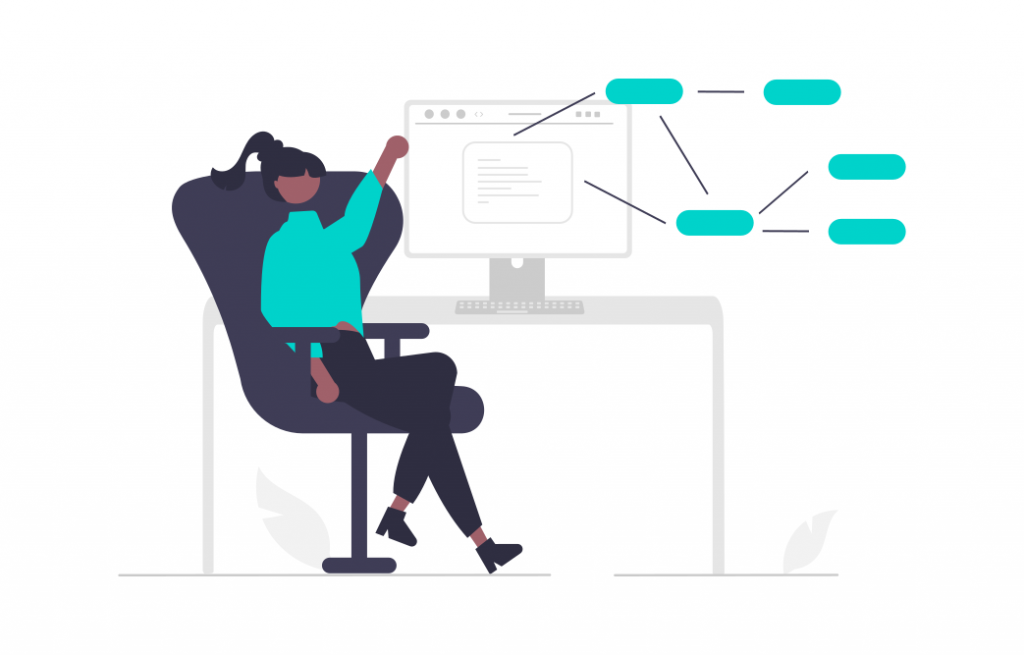
Localization engineers are tech-savvy linguists that combine technical expertise with cultural understanding. Read as we explore the skills they possess, the tasks they perform, and the tools that empower them to bring the digital world to a global audience.
Overview
- What a localization engineer is
- What a localization engineer does
- What tools localization engineers use
- How to become a localization engineer
- How POEditor can assist localization engineers
What a localization engineer is
A localization engineer is a member of a localization team that is responsible for ensuring software, websites, and other digital content are adapted for different cultures and languages. Their job is to take a product and prepare it to be translated into another language, while also making sure it works and reads well for the target audience. This involves a mix of technical skills and cultural understanding.
What a localization engineer does
Before any translation even begins, a localization engineer prepares the software for a global audience. They analyze the code to ensure it can handle different languages, setting the stage for smooth integration of translated text later. They also implement specialized software tools and create resources like glossaries to ensure consistency throughout the project.
Working closely with translators, the localization engineer extracts all the translatable content from the software, including text within code, image descriptions, and even audio scripts. They provide translators with context and style guides to ensure the translated content is not just accurate, but also culturally appropriate and maintains the intended tone.
Once translations are complete, the engineer integrates them back into the software. This might involve rebuilding interfaces or adjusting layouts for languages with different text lengths. They then meticulously test the localized product to identify and fix any bugs or errors that might arise due to translation.
What tools localization engineers use
Since their job is so complex, localization engineers use a variety of tools to streamline their workflow, including:
- Computer-assisted translation (CAT) tools. These software programs provide features like segmenting text for translation, suggesting matches from translation memories (databases of previously translated phrases), and managing terminology glossaries.
- Translation management systems (TMS). Cloud-based platforms that manage the entire localization workflow. They facilitate collaboration between engineers, translators, and other stakeholders. TMS features include project management tools, document storage, and automation capabilities.
- Quality Assurance (QA) tools. After translations are integrated, engineers use QA tools to meticulously test the localized product. These tools can identify issues like text overflowing beyond UI elements or grammatical errors that might have slipped through the cracks.
- File sharing and version control tools. Given the collaborative nature of localization projects, tools like Git or Dropbox are essential for sharing files and maintaining version control.
- Desktop publishing (DTP) tools. While not exclusive to localization, DTP software like Adobe Photoshop and Illustrator is crucial for adapting visual assets. Localization engineers use them to adjust layouts for different languages, ensuring everything remains visually appealing and functional after translation.
How to become a localization engineer
You don’t always need a bachelor’s degree in computer science or linguistics to become a localization engineer, but it will surely be appreciated. Master’s programs in localization are also available for those seeking deeper specialization. Alternatively, courses – such as this one offered by Localization Academy – could potentially provide you with the knowledge you need to start building your career.
What you do need is to develop your technical skills so that you have a strong foundation in programming languages like Python or scripting languages like Javascript. Familiarity with code allows engineers to understand software structures and automate tasks.
Fluency in at least two languages is a must, with one being your native language and the other a target market language. While not always required for entry-level positions, experience with translation can be a valuable asset. You can do some freelance translation work or volunteering to build your portfolio.
If you’re completely new to the field, you may want to consider contributing to open-source localization projects to gain practical experience. This showcases your skills and demonstrates your passion for the field. After all, many employers value relevant experience and a passion for languages over specific degrees.
How POEditor can assist localization engineers
We mentioned how a TMS is one of the most used tools by localization engineers in their day-to-day work. POEditor is designed to streamline the translation and localization processes for software projects. With features like role-based access and collaborative tools, it allows teams to work together seamlessly.
Automation is a key advantage of the platform, integrating smoothly with source code repositories and CI/CD pipelines. This capability ensures that localization engineers always work with the latest content and can automate the import and export of translation files, minimizing manual intervention and errors.
POEditor’s robust quality assurance tools help maintain high translation standards by checking for inconsistencies and providing contextual information for translators. Engineers can track translation progress through the statistics feature, allowing for better project management and deadline adherence.